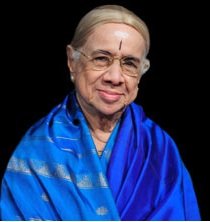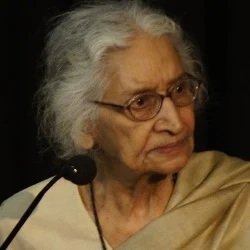It is sad to note the passing away of Rajee Narayan of Mumbai. A Vaggeyakara by all virtues, she was an inspiring Natyacharya loved and respected by the Bharatanatyam fraternity. A very humble, simple person with great scholarship in naatya, music and literature is a rare phenomenon in the performing arts world.
Please type your name along with your comment. Anonymous and derogatory comments are likely to be removed.
Wednesday, 30 September 2020
Friday, 25 September 2020
Article - When Aharyabhinaya, the extraneous representation becomes integral in Performing Arts - Dr. Varada Pandit
A similar theme was explored in the Marathi play 'Wada Chirebandi' by the renowned playwright Mahesh Elkunchvar. The plot was about the three generations of Deshpande family that reside in a heritage house - the 'Wada'. The wada is a witness of the ups and downs of the family and acts as a central character...
Today, the trend of choreography in Kathak is very well established and artistes continue to explore novel ideas. In 2018, Guru Shama Bhate presented 'Chaturang ki Chaupal', a choreography which was based on the idea of space...
Thursday, 24 September 2020
Slick virtual presentation of 26th Kelucharan Mohapatra Awards Festival - Taalam: column by Leela Venkataraman
Wednesday, 23 September 2020
To many, this tribute may appear to be highly egocentric, for which I need be amply excused, since I am helpless. Kapilaji was always aglow in my life's firmament and I always basked in her reflected glory. On the whole, I had the most profound regard for her deep erudition in Indian art and culture. In turn, I felt she had a sneaking appreciation of my abiding cross-disciplinary interest in the sciences and the arts. How I perceived this, I would come to, a little later.
It began in 1975. I was already Dy. Secretary, Min. of Defence in 1968, when I left India as a Commonwealth Scholar and I had then returned with a Ph. D. in "IT and Management" under my belt from Manchester. I was duly made Adviser (Information Systems), Min. of Industry, but I began seriously wondering where I would go in my civil service from there. Tata Steel jumped into the fray and offered me a plum technical position. I was in a dilemma - should I leave the lifelong security in the services and join the fiercely competitive private sector? I escaped to - an unlikely place -- the Himalayas to contemplate and sought the advice from His Holiness the Dalai Lama. I sought and got - absolutely unexpectedly - an immediate "holy audience", provided I could climb the steep hillside from the Dharamsala Tourist Lodge to his hilltop abode, to keep the appointment in time. I did and received his blessing with a beatific smile, "I shall pray for you." I returned and took the plunge.
Sunday, 20 September 2020
Roses and Thorns - In response to TM Krishna's article - Ramaa Venugopalan
('The guru-shishya structure is inherently prone to abuse. It needs to be demolished'
T.M. Krishna writes: The guru-shishya relationship in Indian music is grounded not just in a power imbalance, but in a celebration of inequality, which makes it vulnerable to abuse, which is then romanticised.https://indianexpress.com/article/)
My response to T.M. Krishna's article in the Indian Express dated Sept 19, 2020
On this 'one' account I agree with his thoughts. At least he has the guts to consistently call out and speak about this issue. What is pertinent is the last line in this article (because enough has been said about the other aspects he addresses).
"In the guru-shishya parampara of Indian "classical" music and dance, rarely can a shishya stand up against her or his guru and hope to survive another day."
First off, to call a teacher imparting arts a Guru is problematic for me. As he says let's just address it as domain experts. The power play comes mostly in teachers who are performers themselves. When one is a popular performer, the adulation is beyond comprehension. Calling them deities, Gods and Goddesses of the art form... whatever else, is the problem. By practicing a performing art form, one cannot by default become divine. Two, a student who ventures or seeks to learn from such a star without doubt wants to imbibe those qualities to make them the next God or Goddess and also garner the popularity and opportunities that catapult them into that position. This is the truth! It's transactional in that sense.
Saturday, 19 September 2020
"Obit/Tribute - My tribute to my Guru - Navina Jafa
"How can you go to the fragrance of a flower? Well, you need to understand the soil in which the seed is nurtured, then the journey of the plant, and then the flower. But most times, the journey begins and ends with the fragrance, something that dissolves as soon as it is released."
Friday, 18 September 2020
Obit/Tribute - Tribute to Dr. Kapila Vatsyayan - V.P. Dhananjayan
Wednesday, 16 September 2020
UPAJ - Improvisation in Kathak: Column by Janaki Patrik
Improvisation is one of those components which has fascinated me since I first saw Pt. Birju Maharaj perform in 1963 and was mesmerized. His performance did not appear to be composed. It appeared to be effortlessly improvised. When I decided in that moment to become a Kathak dancer, I wanted to learn everything, and especially improvisation.
Monday, 14 September 2020
Interview - Reading 'The Poetic Saree' - Rashika Ojha
While meditating, the mind takes a plunge inwards from the laughter of the outside to the silence of the inside. Treading this journey is like going through a catharsis of emotions but what happens when the inner self is constantly talking to you... then there is just dialogue. When Jaya Mehta talks with her inner self, she 'spills' over 'melody' of poetry and gives birth to a new idea or genre of poetry, 'Dance Poetry' as beautifully described by the renowned poet, playwright and philosopher Dr. H.S. Shivaprakash in praise of the book 'The Poetic Saree.'
Sunday, 13 September 2020
Stree vesham and a stree without parallel - Taalam: column by Leela Venkataraman
The inspiration behind the elegantly organised Kathakali event by the Institute of Advanced Studies in Bangalore, was a book on Stree Vesham in Kathakali (Shubhi Publication) by exponent Prabal Gupta, dedicated to two famous people in the world of dance who changed his career - the most important being his Guru Sadanam P. V Balakrishnan, groomed under stalwarts like Kalluvazhi Ittirarissa Menon Asan, Pattikamtodi Ravunni Menon and the eminent teacher, innovator whom the guru regards as his role model for life namely, Keezhpadam Kumaran Nair Asan. The second person is Mohiniattam dancer/guru Bharati Shivaji who as Prabal's first dance mentor was instrumental in steering his aptitude for lasya oriented dance towards stree vesham in Kathakali for which she deemed he was a more suitable candidate.....
A 'formidable lady' in more senses than one, Shanta Rao was one of those rare dancers, who will never have a second to equal her. And yet, but for the book Dances of the Golden Hall authored by Ashoke Chatterjee and a clutch of extraordinary photographs of her by Sunil Janah, images of this dancer, who lived in her own private world and whose magnetic almost masculine energy in dancing became a byword in the lasya immersed Mohiniattam world, would have been totally unknown. Great minds were arrested by the electric quality of her dance.
Thursday, 10 September 2020
Article - The quest of a yearning heart - Sudha Sridhar
The incredibly intriguing journey in the realm of art world keeps one on the edge of emotions ranging from that of the pleasant to the most painful while a mystical quest keeps guiding all through.
As a student in pursuit of learning the art form, the heart yearns for a Guru to take one through the rough and tough and reach the acme of the art world knowledge wise. This yearning gets transformed when the same heart reaches the stage of a teacher or Guru yearning for or crying out for transferring the knowledge to discerning students. It is in this context, that one can see how pivotal and paramount the role of the Guru in the art world is. It is akin to how a spiritual aspirant needs to be kept on course on the river of life - Samaskara Sagaram - under the watchful eyes and guidance of the Guru to reach the ultimate goal of life. Any diversion or distraction from the main goal makes the aspirant settle on the banks of the river under the influence of their samaskaras be it good or bad, both unequivocally altering the course of the journey.
Tuesday, 8 September 2020
A piece based on several questions about dance - Soch: Column by Dr. Arshiya Sethi
Sunday, 6 September 2020
Kathak and Dhrupad: Hand in hand - The Eastern Eye: Column by Dr.Utpal K Banerjee
Wednesday, 2 September 2020
Article - Phoenix: Rising from ashes of modernity - Priyakshi Agarwal
I should begin expressing my motivation for joining the Course by saying that I was born and went to ‘Government’ ‘Girls’ Higher Secondary School with instructions in Hindi for 16 initial years of my life in the village of Banera in the South-East of Rajasthan in India. This is not to begin from the original location in chronological order and claim any indigeneity but rather to mark this point of departure as a constitutive condition of my journey with dance and my practice. I participated in complex dances in my village such as Ghoomar, Terah Tali in innumerable festivals in the village, marriage celebrations, state celebrations of Independence Day and Republic Day at the school. I navigated them through a sense of movement and formations, community and space before I came to recognize them as ‘folk dances of Rajasthan’. It was also quite later on that I came to see being raised in a middle-class joint family of 16 people - the obstructions to my requests to dance, creation of hostile conditions towards my desire of expression through my movements, constant demand of duty and care, making it clear to me in no fuzzy terms my role in society - the iron curtain of ‘Girls don’t go out’ as continued violence of a paternalist society.
Tuesday, 1 September 2020
Anita says...September 2020
In the midst of hate, I found there was, within me, an invincible love.
In the midst of tears, I found there was, within me, an invincible smile.In the mist of chaos, I found there was, within me, an invincible calm.
I realised, through it all, that in the midst of winter, I found there was, within me, an invincible summer.
And that makes me happy.
For it says that no matter how hard the world pushes against me,
Within me, there's something stronger -
Something better, pushing right back
- Albert Camus, Nobel Laureate, philosopher, author, journalist
We are in month #6 in India's state of the pandemic. There is still much uncertainty and fear. However, August brought its fair share of drama, theatre, great dialogue, high emotions, tears, chest beating, wailing, public confessions and pompous posturing. A truly gripping reality show of dance-theatre!












